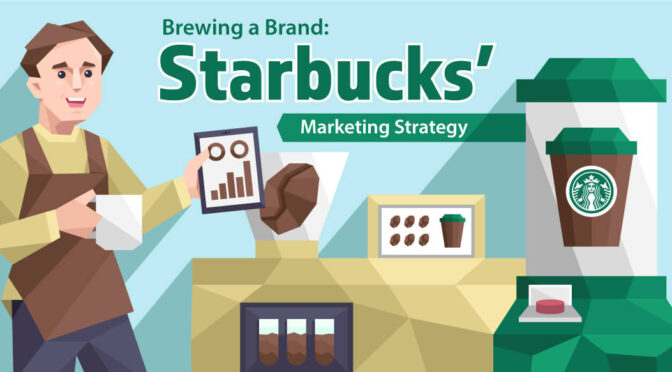It’s the metric that drives all marketing. It determines how much you can spend, it determines how much you make. It decides whether any marketing channel is profitable. It determines your CPC, your ROI, and everything in between.
I’m talking about Lifetime Value, or LTV. It’s one of the most important metrics to understand in almost any type of marketing. It affects just about every area of your business – and yet, it’s one of the most frequently misunderstood metrics.
In this article, we’ll take a deeper look at lifetime value. We’ll start by defining LTV, then we’ll take a deeper look at how it can impact your business and your marketing.
The Basics of Lifetime Value
Lifetime value is, simply put, the amount of money a customer will spend with you over the course of their lifetime. Typically LTV is an educated guess. While companies can look back in time and analyze their historical LTV, but that doesn’t necessarily mean their LTV will the the same moving forward.
For newer companies – companies that are less than 3 years old – most LTV numbers are mostly approximations. Even so, these educated guesses can be very useful. Having a rough sense of your LTV will let you estimate how much you can spend to acquire a customer.
Understanding LTV allows you to compare the amount you’re spending to acquire a customer, against how much you expect to earn from them over the course their lifetimes. For planning marketing spend, this is far better than comparing cash out and cash in.
Cash In, Cash Out vs. Lifetime Value
Why is measuring LTV better than measuring cashflow?
Because generally when you acquire a customer, you’ll be cashflow negative. For example, let’s say you have a $100 LTV. Your revenue might come in like this:
- Acquisition Cost: 45
- Week 1: Free Trial
- Month 1: $20
- Month 2: $20
- Month 3: $20
- Month 4: $20
- Month 5: $20
If you’re only looking at cash in and cash out, a $45 customer acquisition cost might look like a failure by month 2. But over the lifecycle of the customer, it’s actually a very successful campaign.
Measuring Lifetime Value
So how do you actually measure lifetime value? The formula for calculating lifetime value is fairly simple:
Transaction Value x Number of Transactions x Profit Margin
Or, for subscription businesses:
Monthly Revenue x Number of Months x Profit Margin
Although calculating LTV is relatively simple, actually measuring and gathering all the data can be rather complicated.
For one, actually linking purchases to a buyer can be tricky. People often have multiple email addresses, especially if they’re splitting orders between work and home. They might be purchasing items as gifts, or can move residences. You might also have the option to checkout as guest, in which case tying transactions back to individuals is even trickier.
There are tools you can use to help you her this data. Even Google Analytics can help provide some of this data. Unfortunately, part of the art of marketing is also working with incomplete data.
Instead of waiting until you have a perfect set of LTV data, you often have to work with what you have, discard certain segments, and make inferences. For example, you might exclude people who checkout as guest entirely from your LTV calculations. Using people who have longstanding accounts, you can baseline a rough LTV estimate, and apply that across your customer base.
What’s a “Good” Lifetime Value?
A typical rule of thumb is that you want your lifetime value to be 3 to 5 times your customer acquisition costs. In other words, your gross profit should be 3 to 5 times what it costs you to get a new customer.
This 3-5x rule of thumb gives you room to hire staff, pay for the office, phone bills, etc and still have enough margin left over to make a decent profit.
For example, a eCommerce site might calculate their LTV-to-CAC ratio like this:
- Revenue: $50
- Cost of Goods: $20
- Gross Margin: $30
- Customer Acquisition Cost: $10
- Average # of orders per customer: 1
- LTV to CAC Ratio: $30 to $10
There are a lot of rules of thumb with LTV. While these rules of thumbs are useful, they’ll vary significantly from business to business. A grocery store with 7% margins needs to think about LTV very differently than a software business with 70% margins.
Using Cohorts to Analyze Lifetime Value
Your customers’ lifetime value can change over time. As you improve your products, develop your brand, and test different marketing approaches, your customers’ behavior will change as well. Cohorts allows you to measure this change over time.

Let’s say you have a consistent marketing campaign running, from January to June. Although your marketing is the same, your product quality and your customer service have both improved. That means the number of transactions per customer should go up, while your returns should go down.
Instead of just tracking LTV based on customer IDs, or based on marketing campaigns, cohorts let you compare customers by groups of time. Each customer is grouped by the time they made their first purchase – January, February, etc. These groups are called cohorts.
In an ideal world, we’d be able to track the impact of every single variable – website changes, product changes, marketing changes, etc. In the real world, that’s usually not possible. Instead, often the best we can do is to measure our LTV over time, based on when customers first purchased, to make sure our numbers are going in the right direction.
Doing a cohort analysis will tell you a few things:
- Are new customers likely to make a repeat purchase, or less likely to make a repeat purchase, than other customers in the past?
- Are new customers spending more or less per transactions?
- Are your products and your marketing getting better or worse over time?
How Much Can You Spend to Acquire a Customer?
The #1 reason for figuring out your LTV, is so you can figure out how much you can afford to spend to acquire a customer.
By taking the reverse of the 3-to-1 rule, we can say that typically you can spend up to 35% of your LTV to acquire a customer. If your customer LTV is $100, you can afford to spend $35 to acquire them. Again, these are based on averages, and will vary a lot by individual businesses and industries.
Payback Periods
One key thing is missing from the LTV-to-CAC calculation. The factor of time. Although a customer might spend $100 from you during their lifetime, we don’t have their whole lifetime to recuperate our investment.
A metric almost as important to LTV then is Payback Period. Payback Period is the amount of time necessary before you recuperate your customer acquisition costs. You can absolutely go out of business by spending $35 to acquire customers that earn you $1 a month for 100 months.
Venture backed or angel backed businesses tend to be comfortable operating with payback periods of up to 2 years. Most bootstrapped businesses tend to operate on 3 – 6 month payback periods.
Other Factors
Building a business isn’t always about hard dollars and cents. Especially in the early days of a company, or even in a new product launch, it can make sense to spend up to 100% of LTV to acquire customers.
Why?
Because you want to get as many people using your product as possible. You want word of mouth, brand, referrals, and network effects to start kicking in. You’ll start the new product off with more momentum, as well as gather a lot more data about what’s working and what’s not. By having more customers, you’ll also get more feedback on what’s working and what to improve.
You can’t continually run a business by spending all your profits on acquiring customers. But it can be a powerful way to get a new product off the ground.
Using LTV to Determine Your Cost Per Click
If you know how much you’re willing to spend on acquiring a customer, you easily figure out how much you can afford to pay per click (CPC) to your website. Based on that CPC, you can figure out which marketing channels you can test.
For example, let’s say you have a LTV of $200. You’re willing to spend up to $60 to acquire this customer.
Your website conversion rate is 2%. Which means it takes 50 clicks to get a conversion. Another way to look at it, is each click is worth $1.20 to you ($60 per sale / 50 clicks per sale.)
Now you know that as a rough rule of thumb you can afford to spend $1.20 per click. Marketing channels that cost substantially more than that should be avoided.
Expanding LTV = More Marketing Channels
Increasing your LTV is one of the best things you could do for your marketing. Increasing your LTV does not mean a linear increase in traffic. A 40% increase in LTV doesn’t mean a 40% increase in revenue – it could mean a 400% or even 4,000% increase in revenue.
This is because increasing your LTV lets you open up new marketing channels that you wouldn’t have been able to make profitable on the old LTV. For example, let’s say your business was profitable at $200 LTV. Then, by improving your product and marketing, you increase this to $300. Now, AdWords and podcast ads are working, doubling your revenue.
A year later your LTV is $600. Now you can afford to buy ads on TV, pre-roll video, and display ads, which drives your revenue another five times higher than before.
In other words, an increasing LTV has an exponential impact on the entire business. Not only does it increase profitability, it unlocks entirely new marketing channels.
Lifetime Value is Not Evenly Distributed
Most companies use an average LTV to calculate the amount they can spend on acquiring customers. Unfortunately, taking the “average” LTV is often not the best idea.
Using an average LTV to make marketing decisions gives the impression that LTV distribution looks something like this:

When in reality, LTV usually plays out something like this:

In truth, using an average LTV is deceptive. Customer values can vary widely, and often follow a power law distribution. 10% or 20% of your customer can account for 80% of your revenues.
The bottom line is, a small portion of your customers are often responsible for the vast majority of your revenues. This means that taking a simple average is often not the most useful number.
Using an Average vs Segmenting Customers
When you take an average of all customers and use that to calculate LTV, you’re essentially treating all customers as equal. Unfortunately, doing so often results in lower ROI and less effective marketing.
If some customers are worth $5 and others are worth $70, it doesn’t make sense to spend money evenly to acquire an “average customer” in hopes of getting more high value customers.
Instead, your marketing will be more effective if you separate customers into different buckets, and identify the behaviors and traits that highlight a high value customer.
So, how do you go about finding high value customers?
Finding the Patterns of High Value Buyers
Identifying your high value buyers, and then finding more of them, first starts with diving into the data. Ask yourself:
- Is there a difference in demographics between our high value and low value buyers?
- Do high value buyers tend to purchase different kinds of products?
- Do certain traffic sources tend to bring in more high value buyers?
- Do certain messages or marketing funnels tend to bring in higher value buyers?
- Etc
Note: You can export a list of your high value buyers and upload it to Facebook’s Audience Insights. That’ll give you a lot more information about their demographics and interests.
Once you’ve identified the buyers that tend to spend the most money, adjust your marketing accordingly. For example:
- Use an email list of only your highest value buyers to create a Facebook Lookalike Audience, and run Facebook Ads to them.
- Identify the demographics of your high value buyers, and use those demographics when you’re doing your ad targeting.
- Feature the products that tend to attract high value buyers in your ads.
- Create referral programs to incentivize higher value buyers to refer more of their friends, who are also likely high value buyers.
Most businesses have an uneven distribution of LTV. That said, there are exceptions. For example, gas stations and locksmiths both most likely have a fairly even distribution of customer values.
The first step in determining your approach to LTV is to figure out if your distribution of profits is even or uneven. Once you know that, you’ll know whether you should focus on tailoring your marketing to high LTV customers, or to focus on the average LTV-to-CAC ratio.
Dealing with Uncertainty
As much as marketing managers love to put definite numbers in powerpoint slides – me included – the truth is, LTV is a fuzzy number. Most companies don’t know their LTV, and the true LTV number is almost impossible to know.
Instead, we learn to use our best guesstimates to make decisions. We might not know if our LTV is $231.3 or $191, but we can estimate that it’s around $200. We can tell if certain groups are more valuable than others. And we can use that data to inform our marketing efforts.
How do you and your team think about LTV? Share your ideas in the comments below!
Ian luck
Founder, MarketingStrategy.com



















Nice article and informative having the industry insight.
Title
ConsultantSpecialties
The most misunderstood metric in all of marketing too 🙂 If you nail this at the front end based on characteristics, you can effectively identify high value customers and focus on the ones that will produce more revenue for you in the long run. Great post!